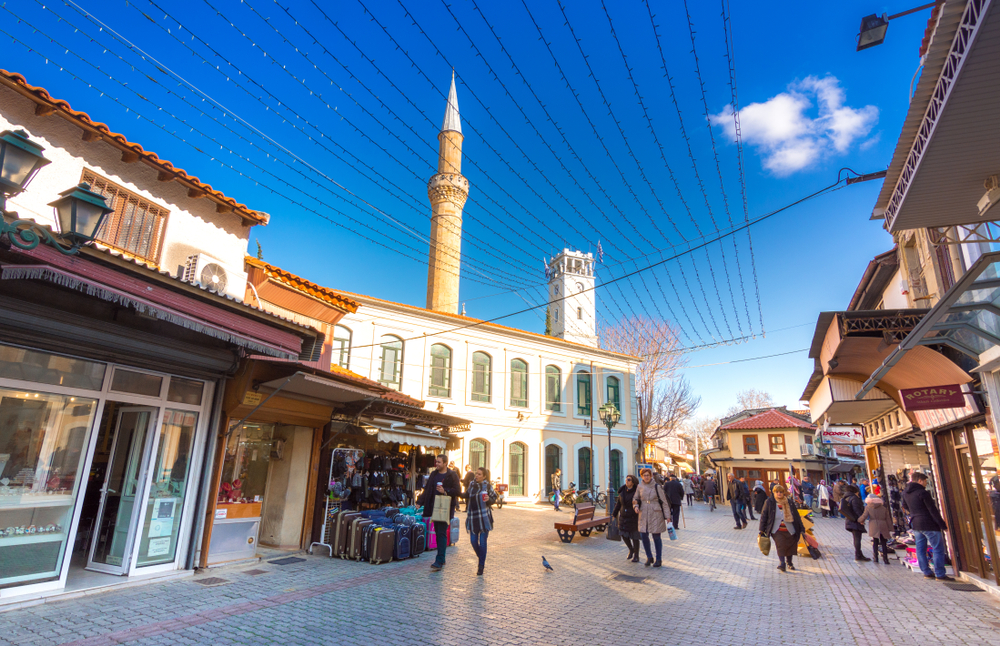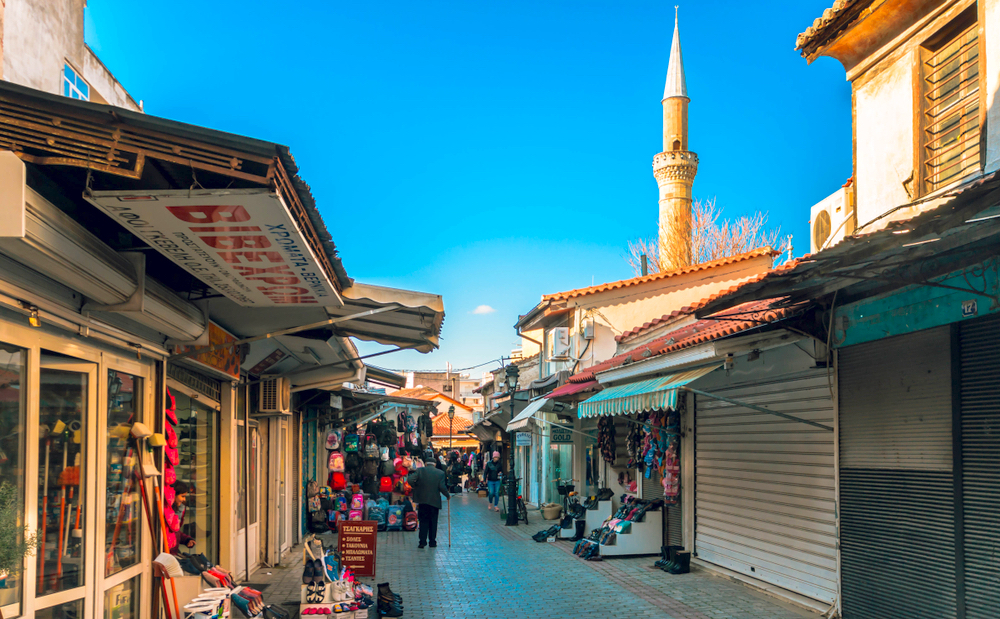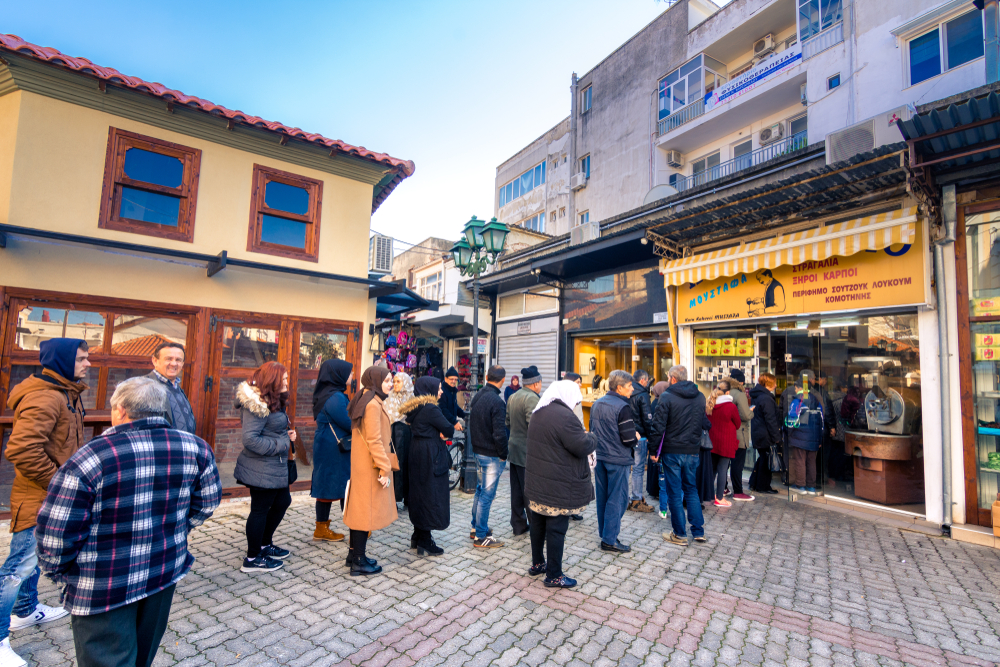
Komotini

Photo by By Georgios Tsichlis @shutterstock.com
|
by Maria Verivaki During my recent travels east of Thessaloniki in Northern Greece, I tried to make sense of all the main towns and cities of the region as we drove through them, one by one. After my third day trip to Komotini, as we left the city, I was surprised to realise that I could not understand it in the same way that I felt that I had understood Serres, Drama, Kavala, Xanthi, Alexandroupoli, Soufli and Didymoteicho. At the same time, I realise how difficult this task is, as my friend who lives in Komotini explained: "... even after a decade and a half living here, I still find the place endlessly fascinating and I'm still learning about its ways and history." And he even calls himself a Komotineo. Komotini is perhaps the most unusual Greek city I have ever visited. It is a city of contrasts: old-fashioned on the one hand, lively and colourful on the other; the horse-and-cart man still drives on the same road as the four-wheel-drive; Moslem shops work with Christian customers. Where else do these sights simultaneously stand out so jarringly and comfortingly? The traffic warden's box must have remained unused for 50 years, but it was still standing in the middle of the road, as if it was warning drivers that big brother is still watching them even if he isnt there. The last meal we ate on the last day of our eight days in the north was in a restaurant just a kilometre or two out of Komotini centre: '... Kane mia Stasi', my friend told us. Make a stop? We had been stopped in Komotini for two hours already. 'It's the name of the restaurant,' he explained, 'just off the old road, close to the motorway'. If you blinked, you might have passed by without noticing it. Without the GPS, we wouldn't even have bothered to look for it (it was next door to a tire shop); instead, we would have admired the view of the large flat plains, stretching uninterrupted for miles in front of us. Not that the restaurant was lacking in any way from typical Greek restaurants of the same genre, except perhaps that the bread was definitely pide and not pita; but it felt like we had landed at the best diner in the area even if it felt like we were in the middle of nowhere. |
|
|
|
Just before we had lunch, we had been drinking sodas in the middle of town, close to a primary school, where mothers in hijab were waiting outside the grounds for their children while everyone's cars were clogging the narrow road. It was almost lunchtime (read that in Greek time). The shops were closing one by one (it was Thursday and they would be re-opening in the afternoon), but I managed to catch a glimpse of the Moslem seamstresses chatting to their Christian customers (perhaps the ladies wanted to have a new 'tayier' made for them to wear to church); the bakirtzi with his wonderful array of bronze and silver-coloured briki, tapsi and teapots, wondering if custom had ended for the day and he should take his wares indoors; the linen store with a colourful collection of ladies' headscarves, the kind I had seen the Pomak lady wearing in the bakery near Xanthi. My favorite shop was the one selling wood-fire ovens. It also sold grills, mesh baskets, hoses, iconostasis, gas cookers, walking sticks, chains, sandals, enamel cups, and all sorts of other things that didn't quite seem to go well together. I knew I wanted to buy something from there, but I just couldn't work out what it was from the dizzy array of items on display. A town is often understood through its monuments, so I looked up 'To Spathi' and found a range of articles describing its construction, but not its significance. The Kapnapothiki no longer stored tobacco - it was now a cultural centre. I looked up 'Konstantinos Karatheodoris' and found out that he had never been to Komotini even though his statue was in the town. The Christian Orthodox Metropolitan Church of the Assumption looked more like a hotel and not a church. During the imam's call for prayer, Eski Mosque remained closed while dozens of Moslem (who looked like my dad) were milling around outside it. The largest Moslem cemetery in Greece is in Komotini. We walked by a long row of houses of different shapes and heights, all with small windows, and it wasn't obvious where the main door was to each. Ok, I thought, and moved on from all this, hoping to find something that would tell me more about the city. It was a wonderfully warm day in November, which lent itself well to urban exploration. So we continued our walk, passing by the the ruins of the old stone walls of the town. All walls eventually fall, taking with them the social barriers they create. |
|
|
|
As we walked through the town, the smell of freshly ground coffee hit me in the face. It was not hard to see where it was coming from. An orderly queue of customers had formed outside Kafekopteio Moustafa. Aha! I thought, maybe this is where I must go to understand Komotini. And so I joined the queue trepidly, taking a careful look at the shop window so that I didn't sound like a complete snob when I asked to buy whatever it was that Moustafa sold (especially since I did not need coffee): everything was colourful, from the packets of dried chickpeas in all colours of the rainbow, the souzouk loukoum with its different fillings and coatings, and the fiery crimson of the pul biber. So this is what Crete looked like in 1920, I thought, slightly overcome by the thought that the population exchange had wiped out all signs of this part of my hometown in Crete. It was finally my turn to be served. The soutzoukakia seasoning mix packet on the counter caught my eye. "What else do I add if I use this mix?" I asked the assistant, who in all honesty, again reminded me of my father, and of many older Cretan men that have passed through my life. (Una fatsa una ratsa, I wondered.) "Just salt," he replied. I added a packet of pul biber to my purchases. Doesn't that go with anything I cook, or at least I hope it did. "Just that?" he asked. The shops was full to the covid limit (max: 4 people), and there were at least a dozen people outside, including a few ladies in hijab. "And some souzouk loukoum," I added as an afterthought. So Moustafa (or perhaps one of his offspring) picked up a rectangular packing box and a pair of scissors, and asked me how much I wanted to buy. "Oh, fill the box," I said. "But don't cut it up for me, I'll do that at home." I'm glad I saw the scissors - try cutting souzouk loukoum with a knife, and you will remember my words. I paid and left the shop, happy to have experienced the delights of the orient. (Dang! I forgot to ask how much mix I use per kilogram of mince. I shall just have to experiment.) As we drove away from the town, we passed by the Ntenim patisserie. The name alone sounded delicious. "Let's stop here," I asked my husband but he refused. Both our stomachs and suitcases were already overloaded and they couldn't handle any more syrupy sweets and savoury bougatses. On the way to Alexandroupoli, taking the old highway route to Sapes, I thought perhaps that I had pinpointed exactly what it was that I wanted to remember of Komotini: its origins lie in the ancient Roman road via Ignatia which passed through the city, linking Dyracchium (now the city of Durres, Albania) with Constantinople (modern day Istanbul, Turkey). No wonder it was hard to decipher Komotini: 2000 years of history and I wanted to take it all in, in one day. I shall have to return. |
Help Support Matt's Greece Guides
Do you enjoy using my site? Have you found it entertaining as well as useful? If so please show your appreciation by booking hotels through the travel agencies and the links found on my Hotels of Greece site. The small commission I
make on the bookings enable me to keep working and in most cases you won't find them any cheaper by searching elsewhere.
You can find
hotels in Greece by location, price, whether or not it has a swimming pool, and see photos and reviews by using this link to booking.com which also contributes to my website when you book. If you are appreciative of all the free information you get on my websites you can also send
a donation through Paypal or Venmo
Join Matt Barrett's Greece Travel Guides Group on Facebook for comments, photos and other fun stuff. If you enjoy this website please share it with your friends on Facebook and other social media.





